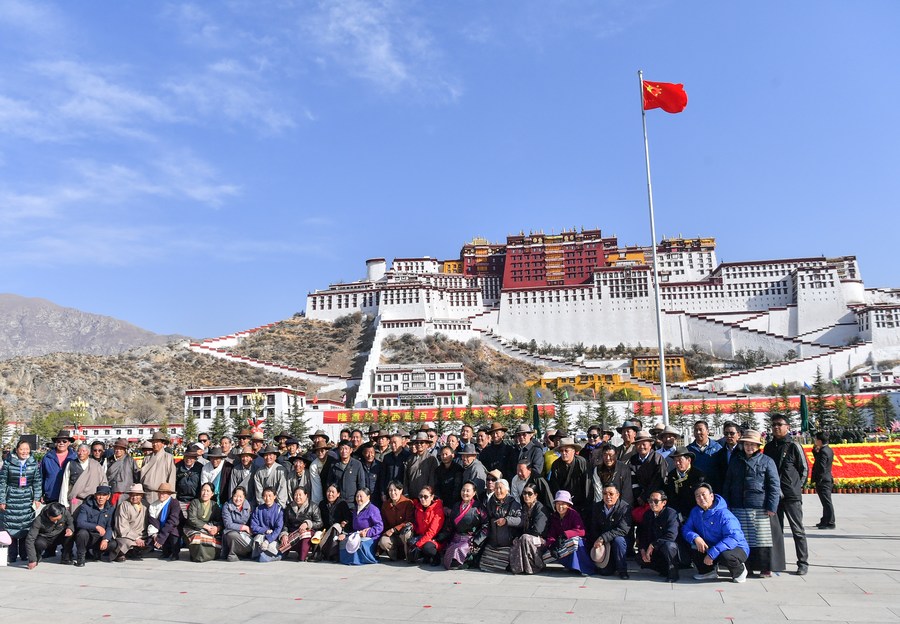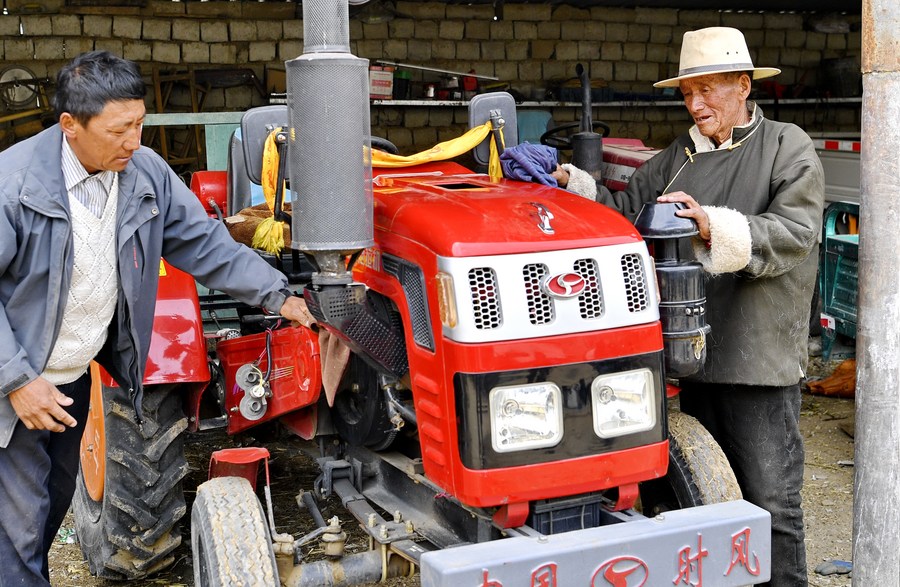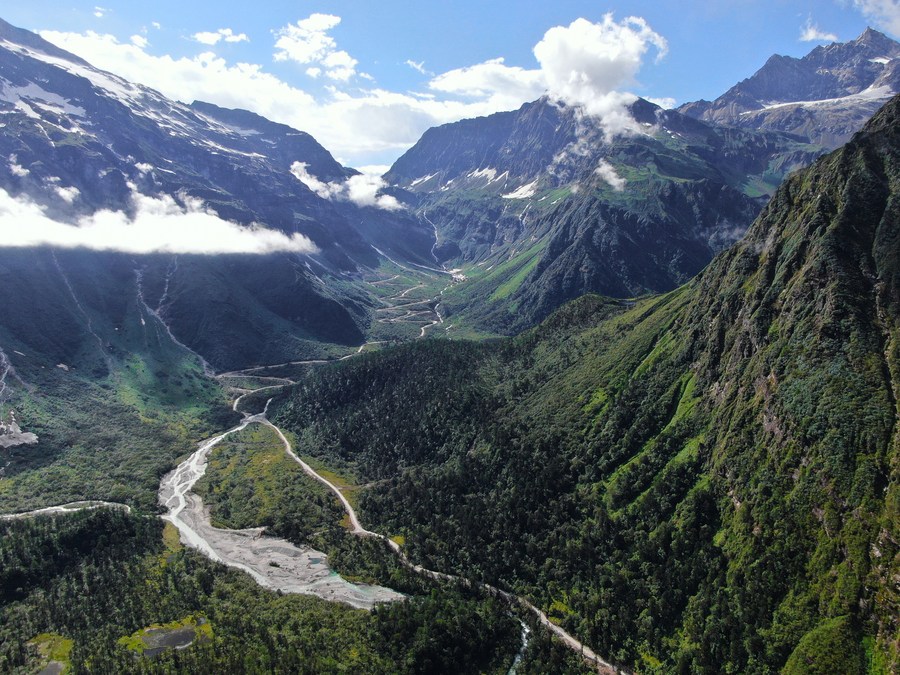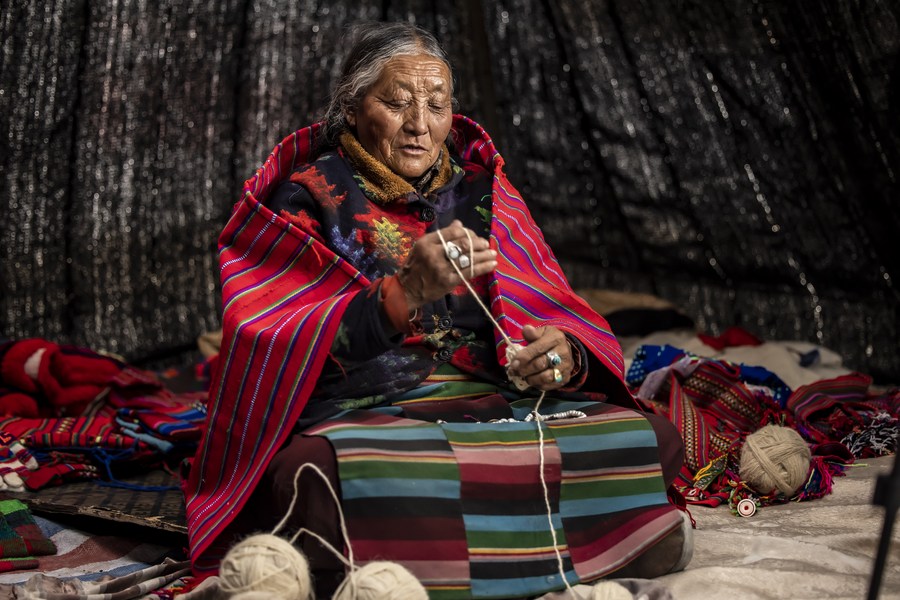
People pose for a group photo to celebrate the Serfs' Emancipation Day at the square in front of the Potala Palace in Lhasa, capital of southwest China's Tibet Autonomous Region, March 28, 2021. (Xinhua/Jigme Dorge)
"What can be observed in the region is economic, educational, health development, etc.," said a French writer and sinologist, adding that "this modernity does not erase tradition and the cultural aspect. The conservation of temples, historic places, but also nature reserves are the key to this transformation..."
BEIJING, May 22 (Xinhua) -- Tibet these years has seen stepped-up socioeconomic development and achieved all-round success in poverty alleviation, with its fine tradition and unique environment well protected and developed, setting an example for the world, foreign experts have said.
They made the remarks after China's State Council Information Office on Friday issued a white paper on the peaceful liberation of Tibet and its development over the past seven decades.
David Monyae, director of the Center for Africa-China Studies at the University of Johannesburg, said the transformation of Tibet is "perfect," and "national unity and coherence is maintained."
Noting that protecting and developing Tibetan culture is vital, Monyae said: "I've been privileged to have been to Tibet. I've seen the work that's being done in terms of protecting the Tibetan language, the Tibetan artifacts and historical sites."

Dro Dra (R) wipes his tractor at home in Xigaze of southwest China's Tibet Autonomous Region, March 20, 2021. Dro Dra, an 85-year-old villager in Xigaze, was once a serf in old Tibet. (Xinhua/Zhang Rufeng)
Sonia Bressler, a French writer and sinologist, said: "The white paper takes stock of the situation of a modern Tibet which has been built on balance with tradition."
"What can be observed in the region is economic, educational, health development, etc.," she said, adding "this modernity does not erase tradition and the cultural aspect. The conservation of temples, historic places, but also nature reserves are the key to this transformation, and the white paper underlines it."
The white paper shows "the efforts made to preserve history and place the region in the future," she said.

Photo taken on Aug. 18, 2020 shows the Doxong Pass and tunnel exit on the highway linking Pad Township in the city of Nyingchi and Medog County, southwest China's Tibet Autonomous Region. (Photo by Dong Zhixiong/Xinhua)
Dilip Barua, general secretary of the Communist Party of Bangladesh, said that Tibet is now experiencing the best of times in its history, saying "Tibet is now (a) united, prosperous, culturally advanced, harmonious and exquisite region of China."
"China's efforts of poverty alleviation and preserving culture in Tibet have created an example of poverty reduction and governance elsewhere in the world," Barua, also former Bangladeshi minister of industries, told Xinhua on Friday.

Tseten Lhamo weaves at home in Dongmar, Rutog County of Ngari Prefecture, southwest China's Tibet Autonomous Region, April 27, 2021. Tseten Lhamo, born in 1945, worked as a serf before the democratic reform in Tibet in 1959, which abolished its feudal serfdom under theocracy. (Photo by Konchog Chosphel/Xinhua)
China's campaign of poverty reduction, including that in Tibet, demonstrates that by respecting realistic conditions, putting people first and pursuing collective development with different regions and ethnic groups, human society can continue to prosper, Barua added.
Over the last seven decades, Tibet has achieved unprecedented rapid transformation, said Sundar Nath Bhattarai, a former Nepali ambassador and executive chairman of the China Study Center in Nepal.
The preservation and promotion of the Tibetan cultural tradition is another most important aspect that has recorded visible progress, the expert added. ■




